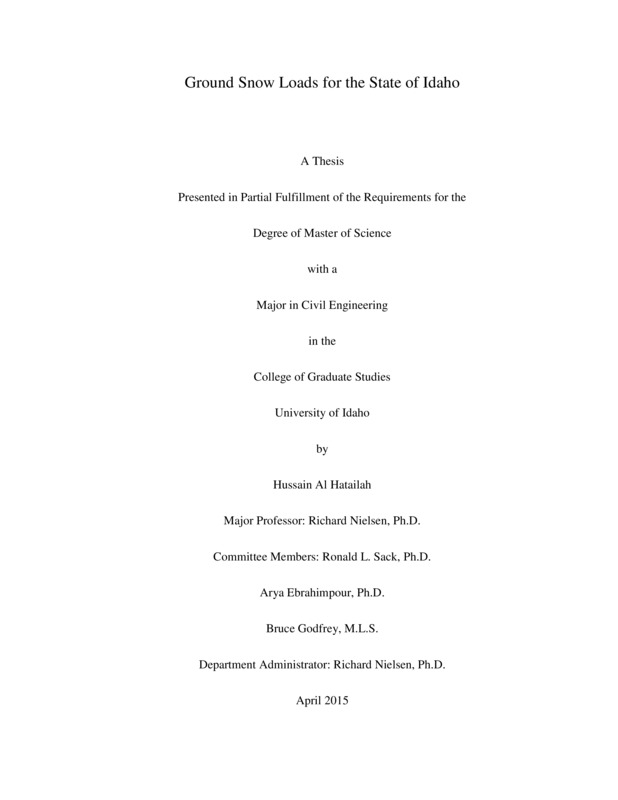Ground Snow Loads for the State of Idaho
Al Hatailah, Hussain Abdullah. (2015). Ground Snow Loads for the State of Idaho. Theses and Dissertations Collection, University of Idaho Library Digital Collections. https://www.lib.uidaho.edu/digital/etd/items/alhatailah_idaho_0089n_10621.html
- Title:
- Ground Snow Loads for the State of Idaho
- Author:
- Al Hatailah, Hussain Abdullah
- Date:
- 2015
- Program:
- Civil Engineering
- Subject Category:
- Civil engineering
- Abstract:
-
The objective of this study is to update the ground snow loads for the state of Idaho. The previous study (Taheri 1985) used the snow data up to 1983. The stations of the National Resources Conservation Service (NRCS), formerly the Conservation Service (SCS), as well as the National Weather Services (NWS) Coop stations, were analyzed for the entire State of Idaho. Additional data from neighboring states were also analyzed to ensure that the snow load mapping considers stations near the borders of Idaho. The NRCS provides two types of stations: the Snow Courses and the SNOwpack TELemetry (SNOTEL) stations. Both types of stations provide continuous monitoring of the snow-water equivalent in inches of water for each location. The NWS Coop stations measure snow depth in inches. The Log Pearson Type III (LP3) is an extreme-value distribution that is used to obtain the 50-years mean recurrence interval (MRI) values; it is the same approach that was used in the Idaho 1985 study. The 50-year MRI values were selected for the ground snow load. For the NRCS stations, the 50-years snow-water equivalent measured directly. For the NWS Coop stations, the 50-year snow depth is converted to the ground snow load using the Rocky Mountain Conversion Density (RMCD) (Sack 1986). Subsequently, the ground snow load of each station is divided by its elevation in feet to provide the normalized ground snow load (NGSL). The NGSLs were mapped using ArcGIS to provide a state-wide contour map. The NGSL was used because it was found to be the best method of mapping the information (Rusten 1976). This approach is also used for the States of Washington and Montana. The Inverse Distance Weighted (IDW) method within ArcGIS was found to give the most accurate results.
- Description:
- masters, M.S., Civil Engineering -- University of Idaho - College of Graduate Studies, 2015
- Major Professor:
- Nielsen, Richard
- Committee:
- Sack, Ronald L; Ebrahimpour, Arya; Godfrey, Bruce
- Defense Date:
- 2015
- Identifier:
- AlHatailah_idaho_0089N_10621
- Type:
- Text
- Format Original:
- Format:
- application/pdf
- Rights:
- In Copyright - Educational Use Permitted. For more information, please contact University of Idaho Library Special Collections and Archives Department at libspec@uidaho.edu.
- Standardized Rights:
- http://rightsstatements.org/vocab/InC-EDU/1.0/

